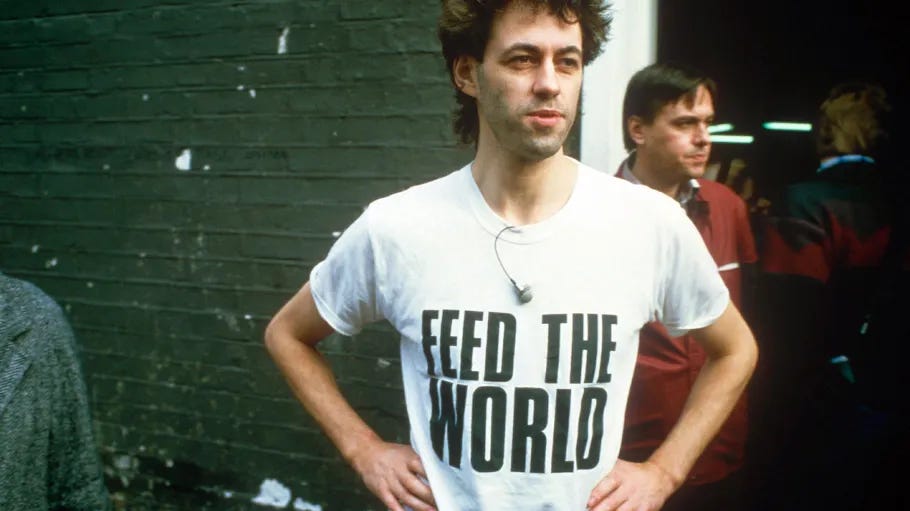Save the animals or save ourselves?
We can feed the world and rewild the planet if we’re smart.
I love rewilding. It’s low-tech. It’s cheap. It’s exponential. Best of all, rewilding isn’t about us. It’s about creating space for all life to thrive – you, me, and every other being, creature and critter too.
But an objection to rewilding keeps nagging me. And if it’s crossed my mind, you can bet it’s also crossed the minds of the enemies of rewilding:
How do we feed the world if we cordon off land for rewilding?

It’s a fair question. Because if we cordon off land for rewilding, we must produce more food from less land. Here are 4 ways we can do it:
1 – Cut waste
A third of all food rots before it’s eaten. That’s criminal wastage. Imagine every third meal snatched from under your expectant nostrils and dumped in the bin.
One way to obtain more food from less land is to stop wasting the food we have. How you do that depends on where you live.
If you live in a rich country
Then most wastage happens in your fridge. Oh, our modern supply chains keep food fresh. But we have so much food. That’s the problem. Leftovers get forgotten. Sometimes, our tummy’s full and we just bin the rest.
If you live in a poor country
Here, the problem isn’t that you throw away food because you have too much. It’s that you can’t get food from the field to the plate before it spoils.
Obviously, a hot, humid climate makes it difficult to preserve food. And when refrigeration is in short supply, it’s obvious why so much food gets wasted between the field and the home.
⏩ Solving the problem
Only buy the food we want. Eat the food we have. And for the love of life, set up secure, refrigerated supply chains where these are lacking.
2 – Distribute food evenly
In rich countries, supermarkets dump food from their shelves. We dump food from our fridges. Sometimes farmers leave part of their harvest in the field because it doesn’t look “pretty”.
And of course, we have spiralling problems with obesity. We are literally eating ourselves to death.
In poor countries, meanwhile, a child dies of hunger every 10 seconds.
And no, this situation is not a sad but inevitable fact of life. Ginormous corporations control where food goes, what it costs and how much producers are paid for it.
So we want to feed the world? Well, let’s start distributing food evenly.
3 – Cut meat
Feast your eyes on this stinking pile of non-logic. This is the land it takes to produce meat compared to plants:

Why the whopping difference between meat and plants? It’s simple: animals need huge amounts of land for grazing. And we need lots of land to grow crops to bulk them up faster.
And you wouldn’t mind, only meat is such a wasteful way of producing food. By one source’s calculations, for all the food and energy we pump into chickens, you only get 11% back as food for us. It’s even worse with cows: only 1% comes back to us as food out of every 100 units of feed we give them.
For now, forget veganism versus vegetarianism versus flexitarianism versus full-on meatism. Focus on this: 50% of all habitable land is used for farming. And 80% of all agricultural land goes to meat (and dairy). So the less meat and dairy we eat, the more land we free up for crops we can eat directly. The more food we can produce from that land. And the more land left over for rewilding.
4 – Increase crop yields
Crop yield is the amount of food you obtain from a given piece of land. Here are a few ways precision farming can improve crop yields:
Seed quality – better seed viability, better storage and, when necessary, genetic modification lead to better germination and growth
Weather forecasting – better warning can be the difference between boom and bust for a harvest
Precision irrigation – better forecasting and monitoring mean plants get exactly the water they need
As
points out in her book Not the End of the World, fertilisers and pesticides also increase crop yields. Obviously, we’re not talking about indiscriminately dumping vast quantities of toxic products on our food. Nowadays, the smart farmer uses these products the way doctors use antibiotics: a little when needed, and only if needed.Another option is permaculture and agroecology. These systems combine several crops within a field to boost overall food yield. They also allow each crop to benefit from cross-species interactions. And they improve soil quality and biodiversity.
Rewilding’s in the bag! Or is it …
Stop wasting the food we have. Start sharing it evenly. Include more plant-based foods in our diet. Increase crop yield. Yep. If we do that, we can feed ourselves and rewild half the planet.
In the end, the biggest barrier to rewilding is not food, technology or planning. It’s ideology. Many people see humans as superior to all other living creatures. Many believe our needs – and wants – trump theirs. Many argue that we are separate from nature, and can survive without it.
Until we nip this nonsense in the bud, rewilding will continue to fall foul of bozos like these.



